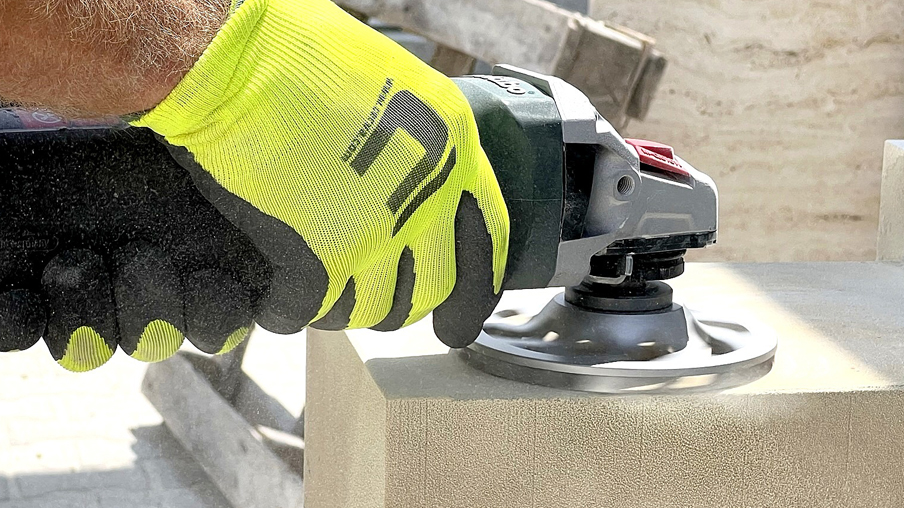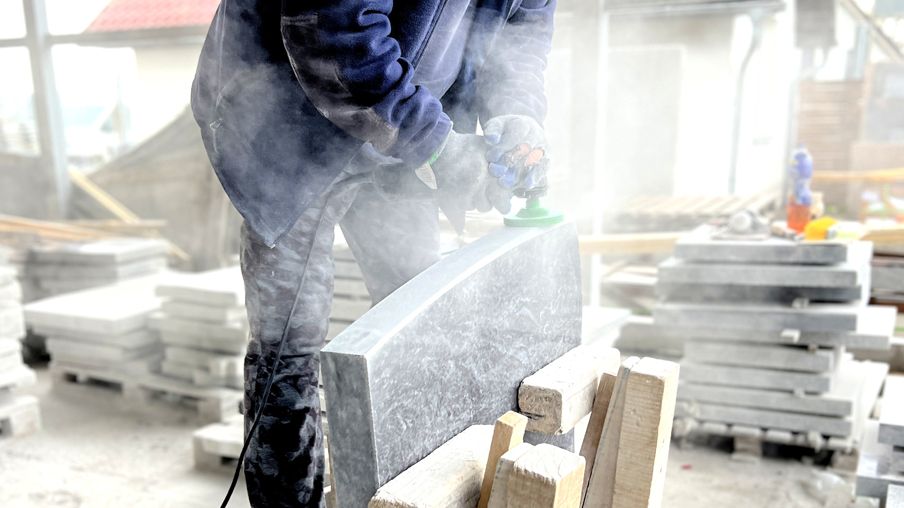The aesthetics and quality of surface finishing are crucial factors in interior and exterior design and construction. Achieving the desired result on stone or concrete surfaces requires following the correct technological procedures. In this article, we will look at the latest trends and techniques in stone and concrete grinding. We will show you how to achieve the best results with your projects. We will go through the entire process from removing rough irregularities to achieving a fine and glossy surface. We will discover how modern tools and techniques provide possibilities that were difficult to achieve until recently.
The Importance of Stone and Concrete Grinding
Grinding stone and concrete is not just about achieving an aesthetic appearance. This process also improves the functional properties of surfaces, such as their resistance to wear, and prepares them for further treatments, such as polishing or applying protective layers. With modern grinding techniques, we can achieve smooth, flat, and shiny surfaces that meet the highest quality standards. During grinding, a considerable amount of material is often removed, resulting in the desired shape, whether a perfect plane or smooth curved shapes. The advent of modern technologies has increased the availability of diamond grinding tools with a wide range of shapes, attachments, and applications.
Basic Division of Diamond Grinding Wheels
For Wet Use
The cooling medium is water, which is directly injected onto the working surface of the wheel between the ground surface and the segment. This removes the grinding sludge while cooling the tool. These tools are intended for professional use.
For Dry Use
The major advantage of using diamond wheels for dry grinding is the low machine requirement. The diamond segment is adapted in composition and shape for work with increased temperature; however, it is still necessary to work sensitively and control the working temperature.

PHOTO: dry sanding of a sandstone cube
Tool Attachment Methods
- M14 Thread - Tools with an M14 thread fit most angle grinders. M14 is a metric thread on the shaft used in most commonly available brands. The tool is mounted directly on the machine without additional securing elements.
- 23 mm Center Hole - The most used center hole in Europe for smaller grinding and cutting wheels (up to 250 mm in diameter). It is secured in the machine using a locking nut.
- SL Attachment - Snail Lock (also known as Bosch or SF) is a quick-mounting system for attaching the tool to the carrier. It is mainly used for professional purposes, and its advantage is the quick tool change.
- Velcro Attachment is mainly used for floor and arm grinders with low speeds. In hand tools, combined with worn velcro fabric and high speeds, there is a risk of the tool coming loose, posing a high risk of injury.
Video: Stone grinding with the Cup TURBO diamond grinding wheel with M14 attachment
Things to Watch Out for When Grinding
- Pay attention to detailed work! It is crucial to realize that after the grinding and subsequent polishing process, the shape no longer changes. This means that insufficiently worked areas will have a different texture after polishing, resulting in undesirable color or structural changes.
- Safety: Always use protective equipment. Grinding dry is a very dusty process. Protect your eyes, face, and respiratory tract from dust and debris.
Photo: grinding and shaping of the granite inscription board - monument
Diamond Grinding Technique Phases
- Rough Grinding is the first step, where larger irregularities are removed to achieve the desired shape. Tools with coarse grain sizes #16, #30, or #60 are used. These grain sizes leave visible scratches or grooves.
- Fine Grinding with grain sizes #100 to #400 removes rough grinding marks and prepares the surface for the next step - polishing.
- Polishing is the following process, starting with grain size #400 and, together with grain sizes #600 and #800, enhances the material's color. At grain size #800, a matte or semi-gloss finish is achieved. Using grain sizes #1200 to #10000, a brilliant mirror-like shine is obtained.
Tips and Tricks for a Perfect Result
Cooling
Heat is generated during grinding, which can damage the grinding segment and material. Before use, ensure that the tool is suitable for dry work or if water cooling is necessary.
Gradation Sequence
Follow grinding procedures - grind gradually from the coarsest grit with the smallest number (e.g., #16) to the finest grit, such as #3000. We recommend consulting this issue with a dealer or expert. There are many types of grinding and polishing wheels, and it is challenging to navigate them.
Our Tip
Before the first grinding, spray a thin layer of a bright-colored spray (blue, red, etc.) on the surface. During grinding, these colored areas will indicate unground spots. In other words, grind until the colored areas are no longer visible. If it is not possible to use colored spray, you can use wax crayons, which we recommend only indoors because they melt and absorb into the material due to heat in the sun.
Conclusion
Products from our range offer amazing possibilities for creating perfect smooth and glossy surfaces. By choosing the right tools and techniques, you can achieve results that meet the highest standards of quality and aesthetic appearance. Whether you are working on large projects or smaller adjustments, these techniques will help you achieve a perfect surface that lasts. Feel free to take advantage of our free consultancy. We have experience gained from the best masters and are happy to share it with you.

